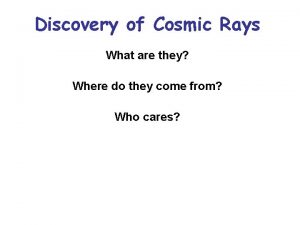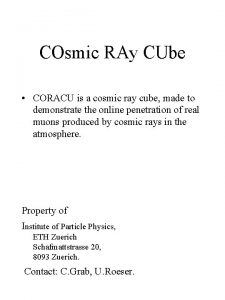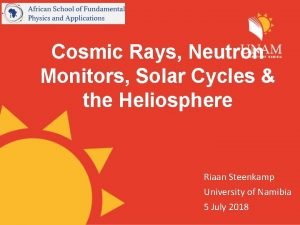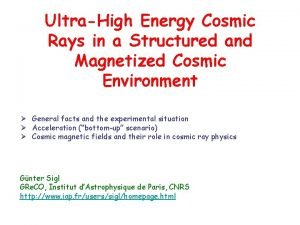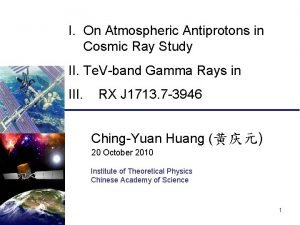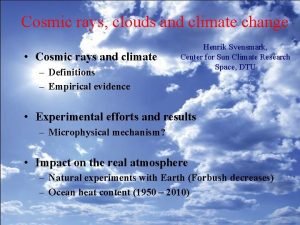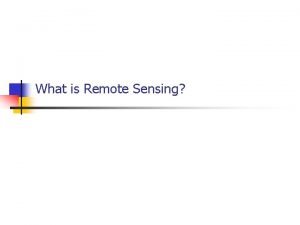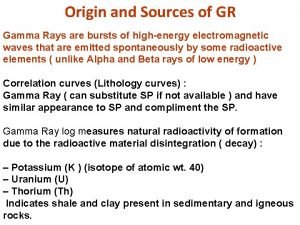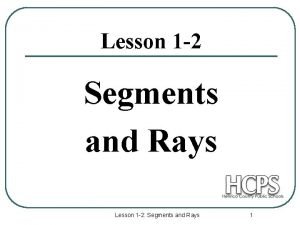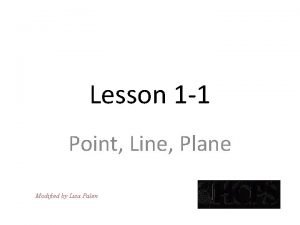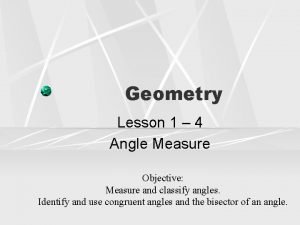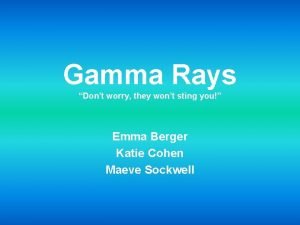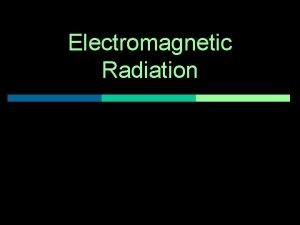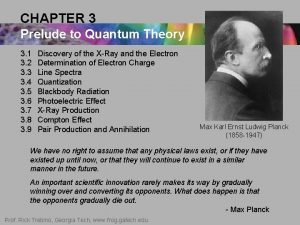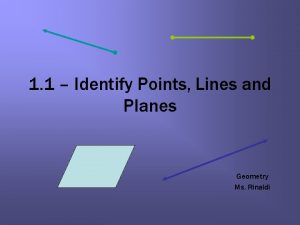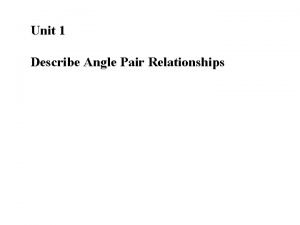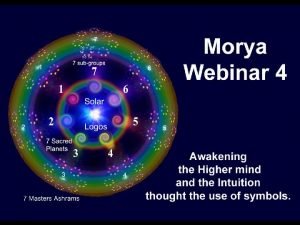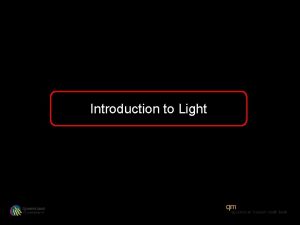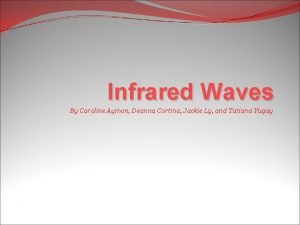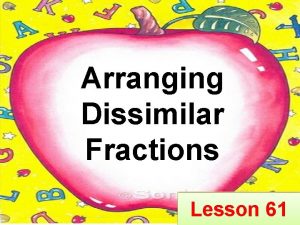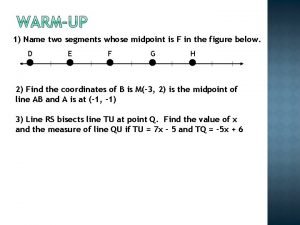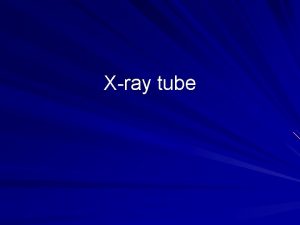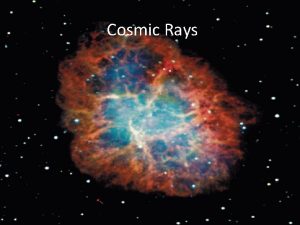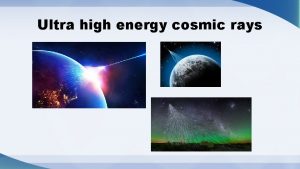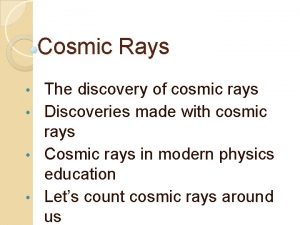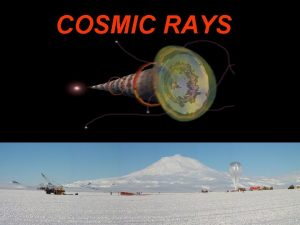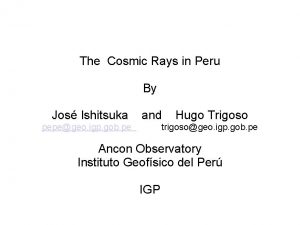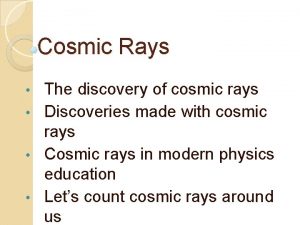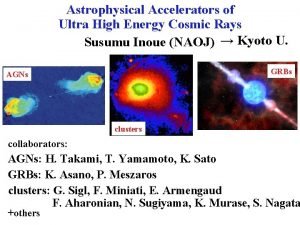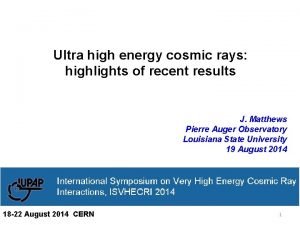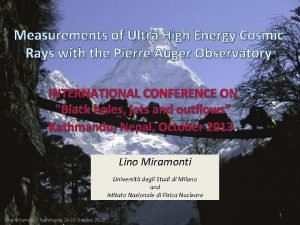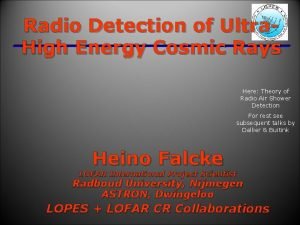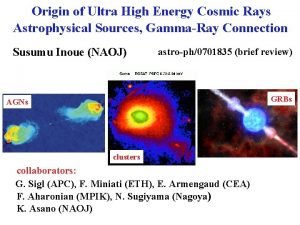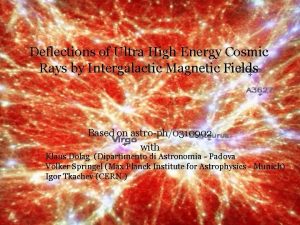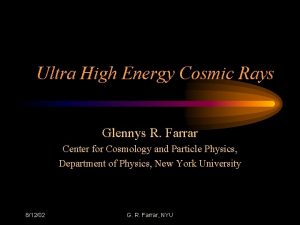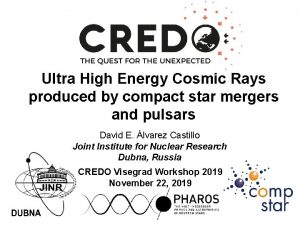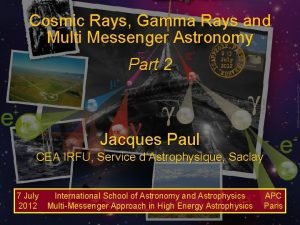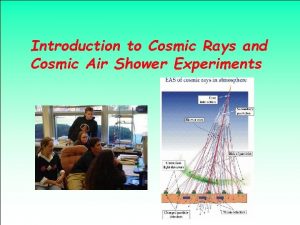ultra high energy cosmic rays theoretical aspects Daniel

































- Slides: 33

ultra high energy cosmic rays: theoretical aspects Daniel De Marco Bartol Research Institute University of Delaware

plan observations & open issues origin of UHECRs propagation: the GZK feature small scale anisotropies UHECRs, -rays and s 2

direct observation indirect observation (EAS) (1 particle per km 2 --century) 3

direct observation indirect observation (EAS) (1 particle per km 2 --century) many joules in UHECR one particle 4

UHECRs: observations spectrum AGASA Hi. Res Auger arrival directions high energy AGASA composition arrival dirs. low energy Ostapchenko, Heck 2005 5 AGASA

UHECRs: observations spectrum two (separate) issues AGASA Hi. Res Auger production propagation for astrophysical GZK feature in the accelerators it is energy spectrum due to challenging to thedirections interactionshigh withenergy the arrival accelerate particles to photons of the CMB such high energies. composition end of the CR spectrum at some high energy AGASA strong flux suppression around 5 x 1019 e. V arrival dirs. low energy Ostapchenko, Heck 2005 6 AGASA

origin of UHECRs bottom-up top-down • the energy flux embedded in a macroscopic motion or in magnetic fields is partly converted into energy of a few very high energy particles. • Shock acceleration at either Newtonian or Relativistic shocks. • Composition: nucleons (nuclei) • autolimiting: Emax ≤ Ze B L 7

hillas plot Emax ≤ Ze B L Hillas 1984 accounting for energy losses the situation is even more difficult lines: 1020 e. V Olinto 2000 8

origin of UHECRs bottom-up top-down • the energy flux embedded in a macroscopic motion or in magnetic fields is partly converted into energy of a few very high energy particles. • Shock acceleration at either Newtonian or Relativistic shocks. • Composition: nucleons (nuclei) • autolimiting: Emax ≤ Ze B L • particle physics inspired models • UHECRs are generated by the decay of very massive particles m. X » 1020 e. V originating from high-energy processes in the early universe. • Topological Defects or SMRP • flatter spectra • Composition: dominated by photons • Constraints from the diffuse gamma rays flux measured by EGRET around 100 Ge. V 9

propagation of UHECRs: protons • redshift losses • pair production (Eth ~ 5 x 1017 e. V) p. UHE + CMB N + e+ + e- loss lengths • pion production (Eth ~ 7 x 1019 e. V) p. UHE + CMB N + high inelasicity (20 – 50%) GZK suppression: loss length @ 5 x 1019 e. V = 1 Gpc loss length @ 1020 e. V = 100 Mpc 10

GZK feature: single source modification factor: observed spectrum / injection spectrum bump suppression 11

similar conclusions for nuclei and gamma rays: CRs can not reach us at UHE if they are generated at distances larger than about 100 Mpc (except neutrinos, violations of LI and so on) if the sources are uniformly distributed in the universe we should expect a suppression in the flux of UHECRs around 1020 e. V 12

AGASA & Hi. Res AGASA claims no. GZK at 4 Hi. Res claims GZK at 4 in 2 r x o t ac e flu f a th K K Z G s: o GZ e Hi. R SA: n A AG actual discrepancies more like ~3 and ~2 DDM, Blasi, Olinto 2003, 2005 13

systematic errors (? ) AGASA -15% Hi. Res +15% agreement at low energy less disagreement at high energy how much? ? ~2 DDM, Blasi, Olinto 2003, 2005 DDM, Stanev 2005 14

some AGASA spectra DDM, Blasi, Olinto 2005 15

both AGASA and Hi. Res do not have enough statistical power to determine if the GZK suppression is there or not 16

auger: hybrid detection 17

AGASA Hi. Res Auger 18

Auger energy determination • reconstruct S(1000) • convert S(1000) to S 38 using CIC curve • convert S 38 to energy using the correlation determined with hybrid data 1019 e. V 19

Auger ICRC spectrum 444 17 20

small scale anisotropy AGASA: 5 doublets + 1 triplet 21

AGASA 2 pcf point sources (? ) DDM, Blasi, Olinto 2005 see also Finley and Westerhoff 2003 22

AGASA multiplets 10 -6 Mpc-3 B~<10 -10 G resol. =2. 5º =2. 6 m=0 E > 4 x 1019 e. V - 57 events 10 -5 Mpc-3 DDM, Blasi 2004 10 -4 Mpc-3 23

sources characteristics LCR = 6 x 1044 erg/yr/Mpc 3 � (E>1019 e. V - from spectrum fits) n 0 = 10 -5 Mpc-3 (from ssa) Lsrc = 2 x 1042 erg/s (E>1019 e. V) are these ssa for real? • the significance of the AGASA result is not clear • Hi. Res doesn’t see them • some internal inconsistency 24

AGASA spectrum discrete sources DDM, Blasi, Olinto 2005 P: 6 10 -4 2 10 -4 : 3. 2 3. 7 25

26 DDM, Blasi, Olinto 2005 arrival directions P~2 10 -5

both the ssa and the spectrum measurement need more statistics to be conclusive and reliable 27

galactic magnetic field regular + turbulent • spiral on the plane • exponential decay out of the plane (~1 kpc) • ~2 G at Sun position • Lmax ~ 100 - 500 pc • Bt ~ 0. 5 - 2 Breg • spectrum: (? ? ) kolmogorov, 5/3 kraichnan, 3/2 sun RL(4 x 1019 e. V) = 20 kpc no big deflections except in the disk or in the center 28

deflections in EGMF - 4 x 1019 e. V 110 Mpc Dolag at el. 2003: constrained simulation of the MF in the local universe MF in voids: 10 -3 -10 -1 n. G MF in filaments: 0. 1 -1 n. G deflections • >1 o in less than 2% of sky • self-similarity >1 o in less than 30% of sky up to 500 Mpc CR astronomy (maybe) possible Sigl et al. 2004: very similar approach, completely different results. Fields in voids higher by 2 -4 orders of magnitude. CR astronomy definitely impossible 29

UHECRs, neutrinos and gamma rays interaction of accelerated protons in the sources or during propagation • the neutrino spectrum is unmodified, except for redshift losses • gamma rays pile up below the pp threshold on the CMB (~ few 1014 e. V) universe = calorimeter EGRET diffuse gamma ray flux (Me. V - 100 Ge. V) produces a constraint on neutrino fluxes Lee 1998 30

CR bound on from astrophysical sources Waxman & Bahcall 1998 1019 - 1021 e. V EGCR spectrum: from EG GR bg energy density of muon neutrinos max. EG p flux p/ horizon ratio EG p: E-2 (thin) fraction of energy lost fraction going in neutrinos Mannheim, Protheroe, Rachen 2000 not valid for top-down sources, optically thick sources… 31

GZK neutrinos W&B from neutron decay from neutrons pion-production Engel, Seckel, Stanev 2001 rates per km 3 water per year: 0. 1 -0. 2 32

issues/questions for the future • increase statistics above 1020 e. V: is the GZK feature present? (solve SD-FD discrepancy) • increase statistics above 4 x 1019 e. V to identify ssa and possibly determine density of sources • measure chemical composition at low energy to determine where the G-XG transition is occurring and at high energy to understand the nature of UHECRs • multifrequency observation of the sources 33
 Cosmic rays discoverer
Cosmic rays discoverer Coracu
Coracu Cosmic rays
Cosmic rays Cosmic rays
Cosmic rays Cosmic rays
Cosmic rays Cosmic rays and clouds
Cosmic rays and clouds Telus acn
Telus acn Theoretical high school
Theoretical high school Energy energy transfer and general energy analysis
Energy energy transfer and general energy analysis Energy energy transfer and general energy analysis
Energy energy transfer and general energy analysis Daniel garcia hendrickson high school
Daniel garcia hendrickson high school Limitations of remote sensing
Limitations of remote sensing Origin of gamma rays
Origin of gamma rays Name 3 points
Name 3 points Examples of opposite rays
Examples of opposite rays Lesson 2 segments and rays
Lesson 2 segments and rays Meaning of linear pair
Meaning of linear pair Fat worms waiting on a dawn bright lawn
Fat worms waiting on a dawn bright lawn Things that block light
Things that block light Renal lobule
Renal lobule 115 degree angle
115 degree angle Paul ulrich villard
Paul ulrich villard Gamma rays uses
Gamma rays uses N-rays
N-rays Acute triangle
Acute triangle Examples of points lines and planes
Examples of points lines and planes Lines ab and cg are
Lines ab and cg are Describe adjacent angles
Describe adjacent angles Precepts definition
Precepts definition Introduction of light
Introduction of light Characteristic of infrared waves
Characteristic of infrared waves Alin sa grupo ng fraction ang magkatumbas
Alin sa grupo ng fraction ang magkatumbas Opposite rays example
Opposite rays example Protective housing of x-ray tube
Protective housing of x-ray tube
